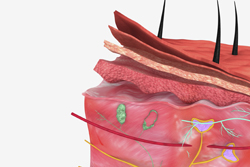Reinforcing tissue engineering research
Tissue engineering and regenerative medicine (TERM) is a complex multi-disciplinary field requiring complementary and cross-sectorial skills in areas such as materials science and cell biology. The EU-funded project 'Training multidisciplinary scientists for tissue engineering and regenerative medicine' (MULTITERM)(opens in new window) recruited and trained 13 early stage researchers (ESRs) who developed state of the art innovative products and techniques for tissue regeneration. MULTITERM conducted six multidisciplinary training workshops and nine generic courses in addition to offering supplementary courses. This ensured that the ESRs obtained the requisite skills at an early stage of their projects. The ESRs developed large scale purification processes that are required for soft tissue engineering. They also developed novel materials — synthetic injectable gels, bone and skin substitutes as well as hybrid scaffolds made of collagen and knitted polymers. The novel materials were tested in vitro for biocompatibility, efficacy and safety using cells from surgical specimens. Their mechanical properties, cell behaviour were studied in depth to determine a superior collagen scaffold configuration. ESRs then prepared extracellular matrix containing constructs to develop off-the-shelf scaffolds and confirmed the suitability of these materials for TERM applications. A major issue limiting the effectiveness of in vitro tissues is the lack of an adequate blood vessel system. MULTITERM ESRs worked on pre-vascularisation of biomaterials using endothelial cells and stromal vascular fraction-derived cells to resolve this issue. they successfully developed a 3 centimetre diameter pre-vascularised fibrin hydrogel and research is continuing to upscale this process. For long-term follow-up studies in animals, ESRs also developed magnetic resonance imaging modalities with contrast using modified hydrogels and bone cement. Better visualisation was achieved using contrast agents such as fluorinated dendrimers and super paramagnetic iron oxide nanoparticles. Besides strengthening the European work force in TERM, MULTITERM activities will also contribute to the development of innovative biomaterials for skin and bone tissues. This should enhance EU economy and improve healthcare outcomes.







